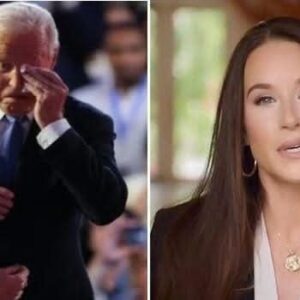In a move that stirred discussion inside and outside Washington, reports suggest that official portraits of three former U.S. presidents have been relocated within the White House to less visible spots.
The portraits in question — depicting Barack Obama, George W. Bush, and George H. W. Bush — were once displayed in areas where thousands of visitors could see them. Now, they’ve reportedly been moved to a section of the Grand Staircase, a location with limited access reserved mainly for the First Family, select staff, and security.
A Change in the Halls of History
President Obama’s official portrait, painted by Robert McCurdy and unveiled in 2022, originally greeted guests in the main entryway. Its minimalist style showed the former president standing against a plain background, inviting the viewer to connect directly with his gaze.
The Bush portraits, created years earlier by artists John Howard Sanden and Herbert E. Abrams, have also been moved to the same restricted area. In previous years, these works were displayed prominently, serving as both historical markers and symbols of continuity in the presidency.
The relocation has drawn reactions online, with some calling it an unnecessary shake-up of White House tradition.
Not the First Time Portraits Have Been Moved
Portrait changes in the White House aren’t new. During his first term, portraits of Bill Clinton and George W. Bush were moved from the Grand Foyer to the Old Family Dining Room, a space rarely seen by the public. They were replaced with images of earlier presidents William McKinley and Theodore Roosevelt.
While reasons for such changes are often left unexplained, they can reflect shifts in how current administrations wish to present presidential history to visitors.
The Meaning Behind Presidential Portraits
Official portraits are more than just art. They serve as lasting records of each leader’s image and, in some ways, the legacy they leave behind. The choice of artist, setting, and even the position of the portrait in the White House can send subtle messages about history, respect, and symbolism.
Robert McCurdy, who painted President Obama’s portrait, once explained that his goal was to create a direct connection between subject and viewer — “a two-way street” where the focus is on the gaze rather than a narrative backdrop.
Public Reactions and Perspective
Changes to how presidential portraits are displayed often spark strong reactions, especially among those who see them as part of a shared national story. While critics may read political motives into such moves, others see them simply as part of the evolving way each administration uses White House space.
For most visitors, the portrait gallery offers a visual walk through U.S. history, highlighting the diversity of leadership styles and the eras they represent. Whether hung in a grand foyer or a quieter hallway, each portrait remains an enduring piece of that larger story.
From Portraits to Fashion — A Lighter Look Back
Discussions about presidential image aren’t always serious. In 2014, then-President Obama sparked lighthearted debate when he wore a tan suit to a press conference — a notable departure from the darker tones favored by most presidents. The moment briefly became a talking point in news and social media, with opinions ranging from amused to critical.
Years later, Obama playfully referenced the “tan suit moment” in his final press conference, showing that even in politics, humor and style can leave a lasting mark. Today, tan suits have found their way into mainstream fashion, proving that trends — and public opinion — can change over time.
A Living, Changing Space
The White House is more than a residence; it is a living museum of U.S. leadership. Portraits come and go from its main halls, reflecting not just the individuals they depict, but the evolving story of the nation itself. Whether moved for space, preference, or symbolism, these artworks remain part of a continuing tradition that links past, present, and future.




